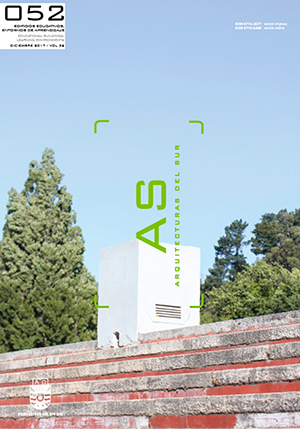Copresence, interaction and diversity: Socio-spatial analysis on a university campus.
DOI:
https://doi.org/10.22320/07196466.2017.35.052.06Keywords:
university campus, social interaction, informal education, open space, social behaviorAbstract
This article analyzes the characteristics of free spaces that encourage copresence, interaction and diversity of user profiles, in eight selected locations at the main campus of the Federal University of Santa Catarina, Brazil. The research adopted quantitative and qualitative methods to explore the potential of configuration and spatial organization in creating educational areas that produce informal encounters. Data were collected through systematic observation, which generated behavioral maps, and through the application of questionnaires, which gathered information about diversity and the reasons for using each location. The study shows that the areas with the highest intensity of copresence and interaction are the spaces close to the academic services. They are well-configured spatially and have high values in both the local syntactic measures of “integration” and “choice”. Regarding the variable “diversity”, the measure of “global choice” was able to capture the diversity in spaces located between academic centers, while the diversity among courses was best obtained through the measures of “local choice”, “global integration” and “local integration”, in that order.
Downloads
References
ABU-GHAZZEH, Tawfiq M. Communicating behavioral research to campus design: Factors affecting the perception and use of outdoor spaces at the University of Jordan. Environment and Behavior, 1999, v. 31, nº 6, pp. 764–804.
ALLEN, Thomas J. Managing the flow of technology. Cambridge, MA: MIT Press, 1977.
ALLEN, Thomas J.; HENN, Gunter W. The Organization and Architecture of Innovation - Managing the Flow of Technology. Oxford, UK: Elsevier, 2013.
BENEDIKT, Michael. To take hold of space: Isovists and isovists fields. Environment and Planning B, 1979, v. 6, pp. 47–65.
CALVO-SOTELO, Pablo Campos. 10 Principles for an innovative model for the 21 St Century university: The Educacional Campus. Aula, 2010, nº 16, pp. 187–200.
CALVO-SOTELO, Pablo Campos. Innovative Educacional Spaces: Architecture, Art and Nature for University Excellence. Aula, 2014, nº 20, pp. 159–174.
GRANOVETTER, Mark. The Strength of Weak Ties. American Journal of Sociology, 1973, v. 78, nº 6, pp. 1360–1380.
HALSBAND, Frances. Campuses in Place. Places, 2005, nº 17, pp. 4-11.
HERTZBERGER, Herman. The Schools of Herman Hertzberger. 10. ed. Rotterdam: Publishers, 2009.
JOST, Lou. Entropy and diversity. Oikos, 2006, nº 113, pp. 363–375.
KOSKI, Leena. Interdisciplinarity in the Context of University Politics. European Educational Research Journal, 2011, v. 10, nº 1, pp. 148–152.
LEE, Yumi; HAN, Gwang Ya.; KIM, Hong-ill. The University-City Interface : Plazas and Boulevards. Journal of Building Construction and Planning Research, 2014, nº 2, pp. 157–165.
PEPONIS, John. Space, Culture and urban design in the late modernism and after. Ekistics, 1989, nº 56, pp. 93-108.
PEPONIS, John, et al. Designing Space to Support Knowledge Work. Environment and Behavior, 2007, v. 39, nº 6, p. 815–840.
SOSA, Manuel E. Where do creative interactions come from? The role of tie content and social networks. Organizationscience, 2011, v.22, nº1, pp. 1-21.
WINEMAN, Jean, et al. Spatial layout, Social structure, and innovation in organizations. Environment and Planning B: Planning and Design, 2014, v. 41, nº 6, pp. 1100–1112.
Downloads
Published
How to Cite
Issue
Section
License
The content of the articles published in each issue of Arquitecturas del Sur is the sole responsibility of the authors and does not necessarily represent the opinion of University of the Bío-Bío.
The authors will maintain their copyright; however, they will guarantee the journal the right to first publication and dissemination of their work. The publication of the article in Arquitecturas del Sur will be subject to the Creative Commons International license (CC BY-SA) that allows others to adapt: remix, transform and build on the material for any purpose, even commercially; share: copy and redistribute the material in any medium or format, as long as the authorship and first publication in this journal are acknowledged by citing them correctly, and their new contributions are under a license with the same terms.














 Programa de Información Científica/Concurso Fondos de Publicación de Revistas Científicas 2018/ Proyecto Mejoramiento de Visibilidad de Revistas UBB (Código:FP180007)
Programa de Información Científica/Concurso Fondos de Publicación de Revistas Científicas 2018/ Proyecto Mejoramiento de Visibilidad de Revistas UBB (Código:FP180007) 
